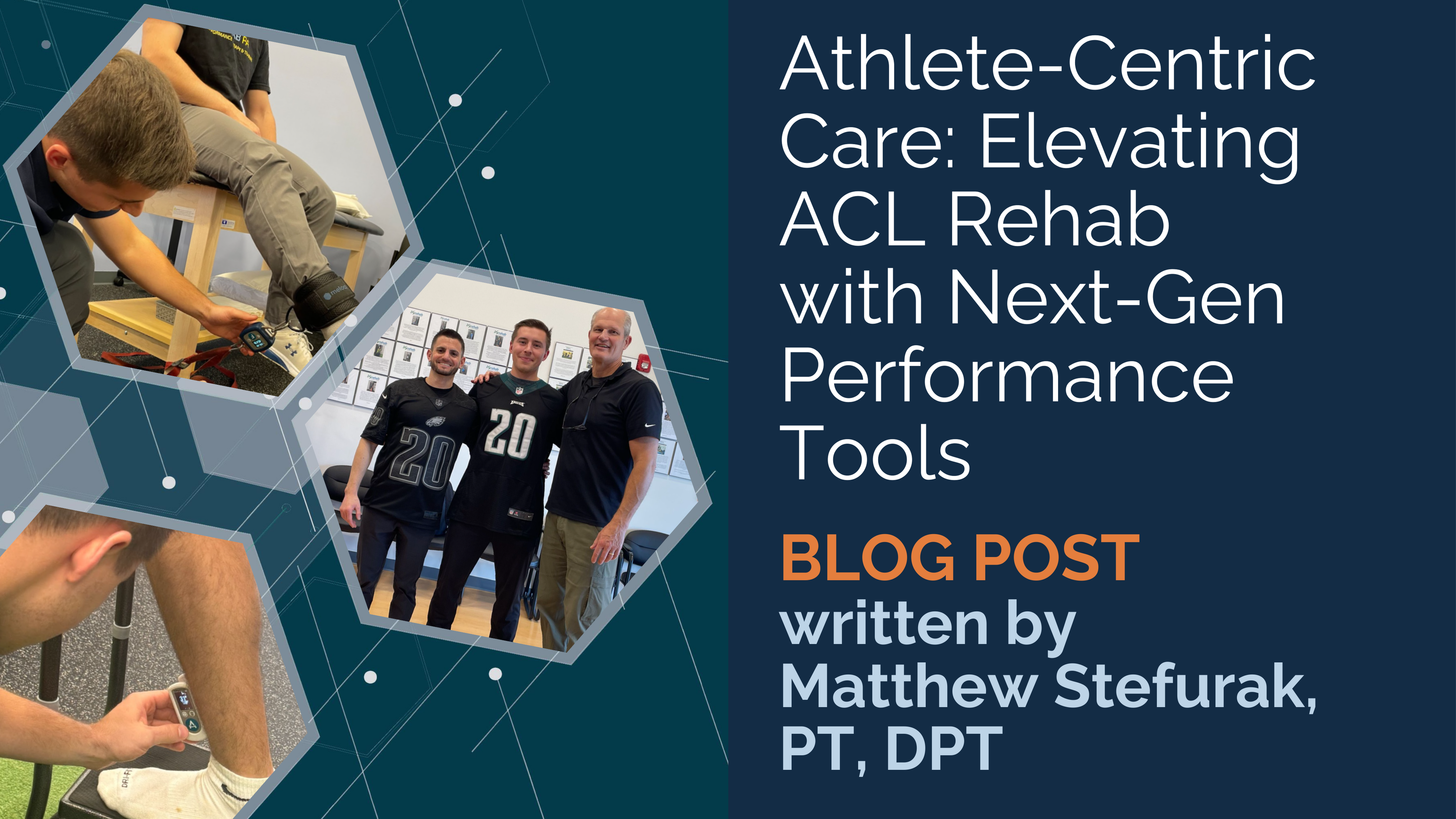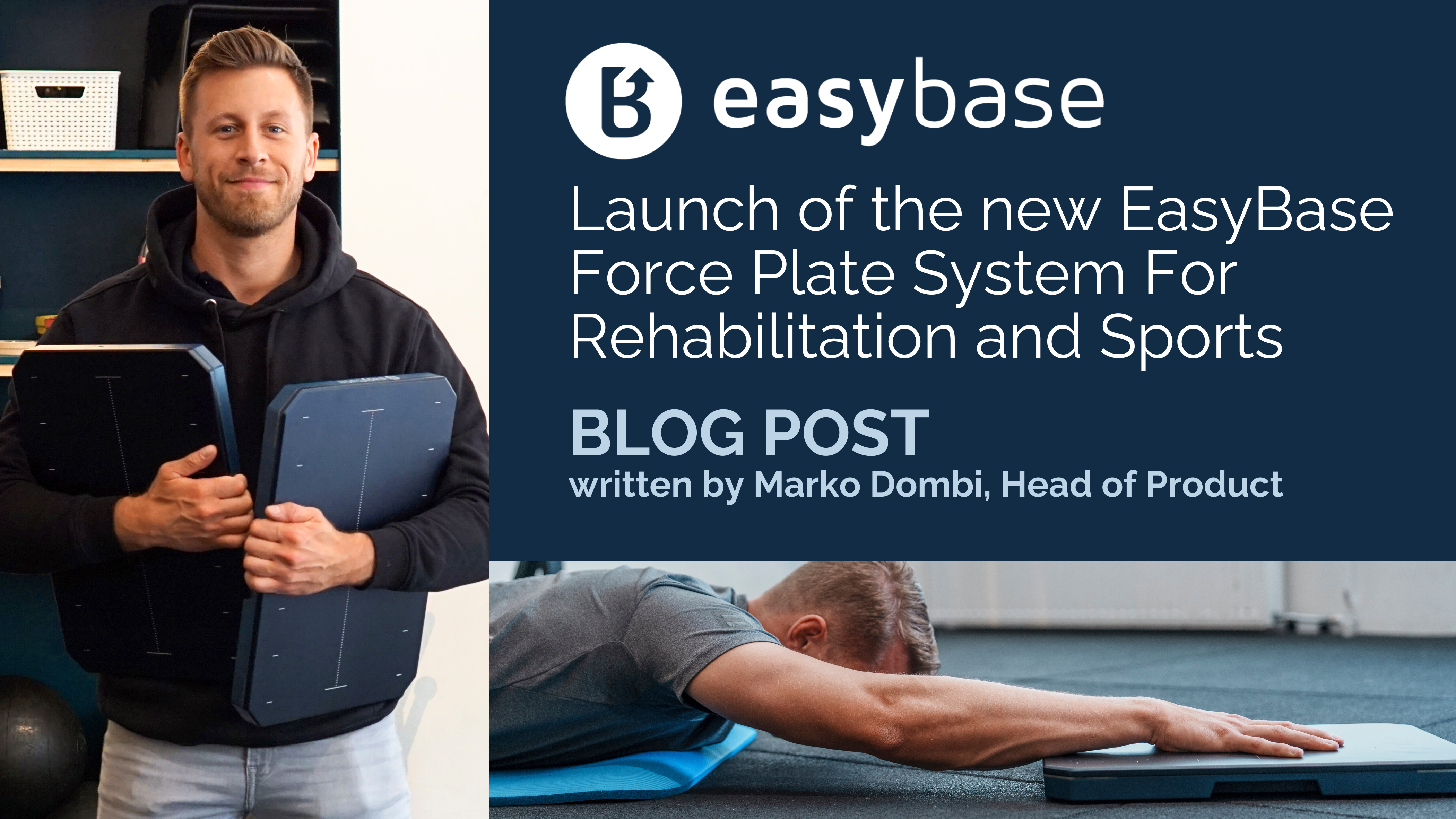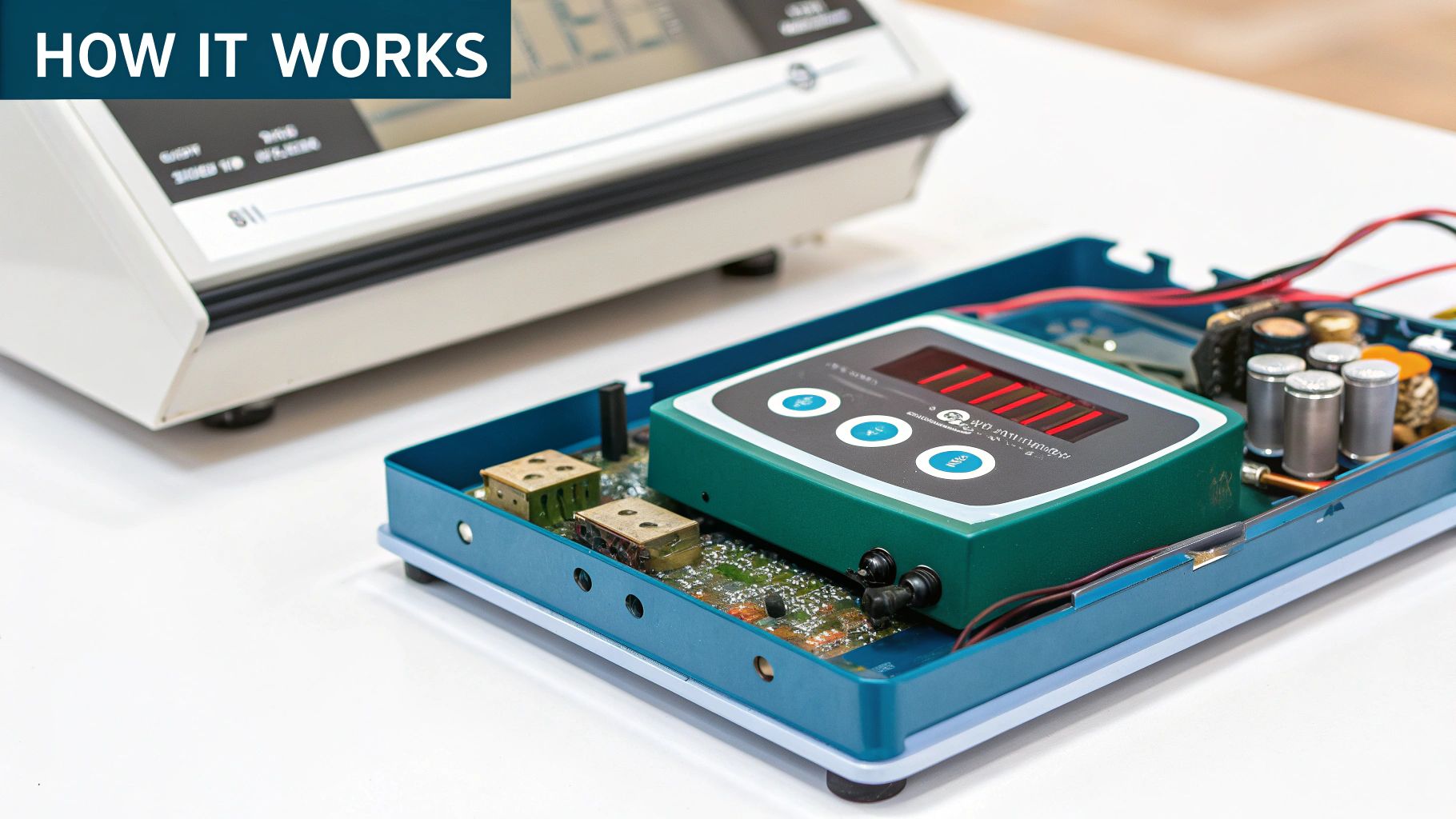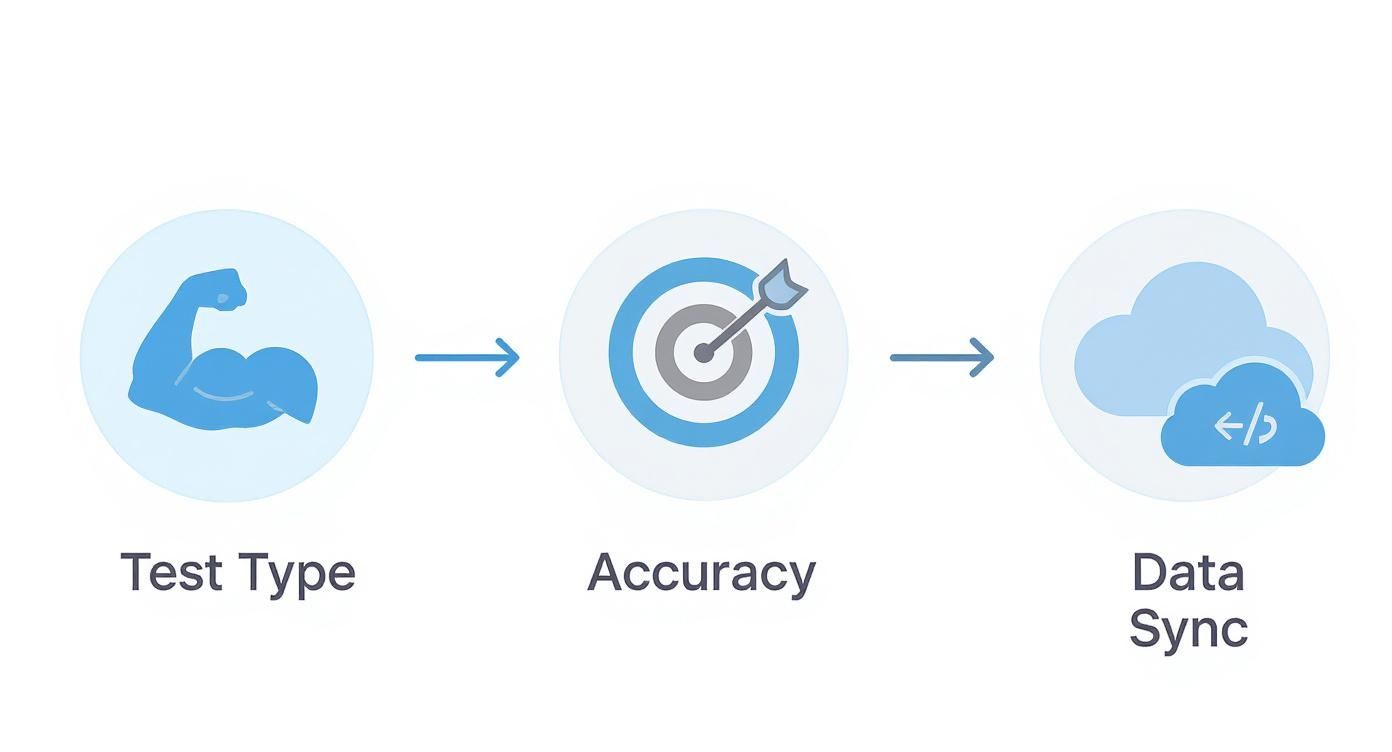-

, by Marko Dombi Athlete-Centric Care: Elevating ACL Rehab with Next-Gen Performance Tools
-

, by Marko Dombi Launch of the EasyBase - Force Plate System For Rehabilitation and Sports
-

, by Marko Dombi Interview with the researcher | Enhanced Paper Grip Test Project
A PTs Guide to Dynamometer for Physical Therapy
- , by Team Meloq
- 19 min reading time

Discover how a dynamometer for physical therapy provides objective data to track patient progress, refine treatment plans, and improve rehabilitation outcomes.
When you hear "dynamometer," you might think of something from a physics lab, but in a physical therapy setting, it's a powerful tool for measuring muscle strength and force. It takes the guesswork out of strength assessment, replacing subjective feelings with hard, quantifiable data. This makes it a cornerstone of modern, evidence-based rehabilitation.
Why Precision Measurement Matters in Modern Therapy

As clinicians, understanding a patient's true strength is crucial. For decades, physical therapists relied on manual muscle testing (MMT)—a hands-on approach to gauge resistance. While a valuable clinical skill, MMT is inherently subjective. It’s a bit like judging a fever by touching someone’s forehead; you know they feel warm, but you can’t say if it’s 38°C or 39°C, or track those small but crucial changes.
A dynamometer is the clinical equivalent of a digital thermometer. It provides a precise, objective reading of a patient’s force output. This eliminates ambiguity and provides a solid baseline to build an effective treatment plan upon.
The Shift to Evidence-Based Practice
This move toward objective numbers isn't just a passing trend; it represents a fundamental shift in how we approach rehabilitation. Evidence-based practice demands measurable outcomes to guide our clinical decisions, and that’s exactly what dynamometry delivers. This data-driven approach brings clear advantages to the clinic:
- Pinpoint Weakness: Objective numbers help us identify the true extent of muscle weakness or imbalances with far more accuracy than subjective assessment alone (1).
- Truly Personal Plans: With concrete data, we can design rehabilitation programs that are perfectly tailored to a patient's current strength levels.
- Show, Don't Just Tell: Quantifiable results let the patient and therapist see progress clearly. This can be a significant motivator and validates that the treatment plan is working.
- Justify Care with Confidence: Hard data provides compelling proof of medical necessity and progress, which is vital for securing insurance approvals and reimbursements.
At its core, a dynamometer transforms an educated guess into an objective fact. This is essential for elevating the standard of care and ensuring every patient gets the most effective treatment possible.
This shift is reflected in market trends. The global medical dynamometer market was valued at approximately $547.5 million in 2023 and is projected to climb to $780.1 million by 2028. This growth is driven by the rising prevalence of musculoskeletal conditions that demand precise assessment for effective care. You can explore these market insights on BCC Research. When a patient’s recovery is on the line, objective data is indispensable.
How Modern Dynamometers Actually Work

To appreciate the impact of modern dynamometers, it helps to remember earlier devices. Many clinicians started with spring-based or hydraulic handgrip devices. They provided a number, but it was often a ballpark figure—more like an analog bathroom scale than a precision instrument.
The jump to digital wasn't just an upgrade; it was a revolution in measurement. Instead of relying on mechanical parts, today's dynamometers use highly sensitive electronic components to translate a patient's effort into precise digital data. This has redefined how we measure, track, and understand muscle function.
From Physical Force to Digital Data
How does this conversion happen? The key component inside most digital dynamometers is a strain gauge. Think of it as an ultra-sensitive electrical resistor designed to detect even the slightest change in its shape.
When a patient exerts force against the device, its internal structure deforms by a microscopic amount. This tiny flex is enough to stretch or compress the strain gauge, which immediately changes its electrical resistance. The device’s processor detects this change in a fraction of a second and, using a calibrated algorithm, converts it into a precise unit of force, such as Newtons, pounds, or kilograms. For a deeper dive into the mechanics, check out our guide on how a dynamometer works.
The elegance of a digital dynamometer lies in its ability to convert a physical act—a patient's muscular effort—into a clean, digital signal. This signal is the foundation for all subsequent data analysis, from tracking peak force to monitoring progress over weeks of rehabilitation.
The Connectivity Revolution
Beyond mere accuracy, the real breakthroughs are in data management. While early digital models displayed a number on a small screen, today’s tools are far more integrated.
Here's what sets them apart:
- Wireless Data Transmission: Many modern devices use Bluetooth to instantly send results to a tablet or computer. This eliminates manual data entry, saving time and preventing transcription errors.
- Software Integration: Dedicated applications don’t just store numbers; they visualize them with charts and graphs, making it incredibly easy to track a patient's progress and identify trends.
- Enhanced Metrics: Advanced software often performs calculations automatically, providing key metrics like average force, rate of force development, and limb symmetry indices.
This seamless flow of information is why these tools are becoming standard in clinical practice. In fact, a market analysis from Technavio suggests the demand for electronic medical dynamometers will drive significant market growth, projecting an increase of $266.1 million (USD) between 2025 and 2029. This is because healthcare is increasingly demanding objective, evidence-based data, and these devices deliver.
Ultimately, these advancements mean therapists can spend less time on documentation and more time interpreting data to optimize patient care.
Applying Dynamometry in Clinical Practice

Theory and technology are important, but where a dynamometer for physical therapy proves its value is in daily clinical application. It’s here that raw strength data transforms a generic treatment plan into a personalized, responsive roadmap for recovery.
Let's explore how this plays out in common scenarios, from initial assessment to confident discharge.
The workflow begins with establishing a precise baseline—an objective snapshot of the patient's current strength. This number becomes the anchor for setting realistic, data-driven goals that both therapist and patient can track. As rehabilitation progresses, periodic re-testing provides clear, motivating feedback. These check-ins are no longer based on a patient "feeling stronger" but on objective data showing measurable improvement in force output. This empowers clinicians to make confident, evidence-based decisions at every step.
Post-Surgical Rehabilitation: ACL Reconstruction
After an ACL reconstruction, restoring quadriceps strength to match the uninjured leg is a critical milestone for a safe return to sport. Guesswork in this context can increase the risk of re-injury. A dynamometer provides objective clarity.
At appropriate post-operative time points, a therapist can test the quadriceps, hamstrings, and other key muscle groups. By comparing the force output of the surgical limb to the non-surgical one, a Limb Symmetry Index (LSI) can be calculated. This percentage serves as a clear benchmark of recovery.
Research suggests that achieving an LSI of 90% or higher is often a key criterion, among others, for an athlete to begin the process of returning to sport (2). This objective data point gives the athlete, coach, and clinician confidence in the decision-making process.
Neurological Recovery After Stroke
For a patient recovering from a stroke, progress can feel slow and difficult to perceive. A dynamometer can provide tangible proof of neuromuscular improvement, even when large functional gains are not yet apparent.
A therapist might use a handgrip dynamometer to track grip strength, a crucial indicator of motor recovery. Seeing the numbers climb week by week, even slightly, can be a significant psychological boost for the patient. For the therapist, this data helps fine-tune treatment, targeting specific deficits that the numbers reveal.
This trend toward precise data is occurring across healthcare. The medical dynamometer market was valued at $859.88 million in 2024 and is projected to reach $1,429.53 million by 2032, according to one market report. This growth is fueled by a rising need for accurate strength assessment in orthopedics, neurology, and sports medicine. You can read the full market research for more details.
Managing Age-Related Muscle Loss
Sarcopenia, the progressive loss of muscle mass and strength with aging, can severely impact an older adult's independence. Dynamometry offers a simple yet effective method for screening at-risk individuals and tracking the efficacy of strength-building programs.
A quick grip strength test can serve as a reliable indicator of overall frailty and is correlated with broader health outcomes (3). Once a baseline is established, a targeted resistance training program can be implemented. Follow-up tests provide objective proof that the program is working, motivating the individual to adhere to it and helping to justify the continued need for therapy.
In every case, better data leads to better outcomes.
How to Choose the Right Dynamometer
Selecting the right dynamometer for your physical therapy practice is a significant decision. It will influence your clinical workflow and, more importantly, your patient outcomes. With numerous options available, it's essential to clarify your clinic's needs, patient demographics, and data-capturing requirements. A well-chosen tool becomes an integral part of your assessment process, not just another gadget on a shelf.
The first question to ask is: what is its primary purpose? Are you focused on grip strength for neurological recovery, or do you need a versatile device for testing large muscle groups like the quadriceps and hamstrings in athletes? Function should always guide your choice.
Key Factors in Your Decision
When evaluating a dynamometer for physical therapy, several key features should be on your checklist. These distinguish a good tool from a great one in a busy clinical environment.
Consider these core factors:
- Accuracy and Reliability: The primary purpose of a dynamometer is to obtain objective, trustworthy data. You need to verify its accuracy (how close measurements are to the true value) and its inter-rater and intra-rater reliability (consistency of results between different testers and over repeated tests). Without high reliability, the data's clinical utility is compromised (4).
- Versatility of Attachments: A single dynamometer can perform dozens of different tests, but only with the right attachments. Look for a kit that includes various straps, pads, and handles to securely test everything from hip abduction to cervical strength. This versatility is crucial for a diverse patient load.
- Data Management and Software: How are measurements transferred from the device to the patient's record? Manual transcription is slow and prone to error.
A well-chosen dynamometer does more than just measure force; it integrates seamlessly into your clinical workflow, making objective measurement a standard, efficient part of every relevant patient evaluation.
Comparing Features for Your Clinic
To simplify this decision, let's break down these must-have features. While a handheld dynamometer is excellent for measuring isolated muscle force, it's just one piece of the assessment puzzle. It can also be beneficial to understand how other technologies fit in; for example, you might want to learn how force plate testing provides complementary data for a comprehensive view of a patient's function.
The table below outlines what to look for when selecting your next dynamometer.
Key Features for Selecting a Clinical Dynamometer
| Feature | What to Look For | Why It Matters in Clinic |
|---|---|---|
| Testing Capacity | A force range (e.g., up to 135 kg / 300 lbs) that matches your patient population, from frail older adults to strong athletes. | Ensures the device is sensitive enough for low-force measurements and robust enough for peak performance testing without reaching its limit. |
| Ergonomics & Portability | A lightweight, comfortable design that is easy to handle during testing and transport between rooms or to off-site locations. | A bulky or awkward device is less likely to be used consistently. Portability is key for therapists working in multiple settings. |
| Software Usability | An app or software that is intuitive, generates clear reports, and allows for easy management of patient profiles. | Reduces the learning curve and administrative burden, allowing clinicians to focus on the patient rather than wrestling with complicated software. |
Ultimately, the best dynamometer is the one you will use consistently and confidently.
Standardizing Your Testing for Reliable Data
A digital dynamometer is a high-precision tool, but its true power is only unlocked through consistent use. Imagine using a high-precision scale; if you weigh an object while the scale is tilted one day and perfectly flat the next, you will get different readings and draw incorrect conclusions. The same principle applies to muscle strength testing.
Simply put, consistency is paramount.
Without standardized protocols, your data can become messy and unreliable. You might be left guessing whether a change in a patient's strength reflects actual progress or is merely an artifact of an inconsistent testing method. A clear, repeatable process is not just best practice—it's a clinical necessity for generating valid data (4).
Building Your Testing Blueprint
Creating a standardized protocol is about controlling variables to ensure the only thing changing between measurements is the patient's force output. It doesn't need to be complex, but it must be consistent.
Here are key elements to standardize in your protocol:
- Consistent Patient Positioning: The joint angle, body posture, and method of stabilization must be identical for each test. Documenting these positions with photos or detailed notes in the patient's file is a helpful practice.
- Clear and Uniform Instructions: Verbal cues can significantly influence effort. Standardize a phrase like, "Push as hard and as fast as you can," and use it for every trial to elicit a true maximal effort.
- Defined Number of Trials: Most clinical guidelines recommend performing two to three trials for each muscle group to ensure you capture a genuine maximal effort, not just a single attempt (5).
- Adequate Rest Periods: Fatigue can easily skew results. Providing sufficient rest, typically 30-60 seconds between trials, is crucial to prevent this.
When you standardize your approach, you're not just collecting numbers; you're building a reliable dataset. This data becomes the bedrock for your clinical decisions, whether you're adjusting a treatment plan or clearing an athlete for return to play.
Why Reliability Is Your Ultimate Goal
In clinical measurement, two types of reliability are paramount: intra-rater and inter-rater. Intra-rater reliability means a single therapist can obtain the same result on the same patient over repeated measurements. Inter-rater reliability means different therapists in a clinic can obtain the same result on that patient.
Achieving high levels of both is the gold standard. It ensures that a patient's data is dependable, regardless of who conducts the test. This is especially vital for tracking progress over a long rehabilitation journey where multiple therapists may be involved.
The infographic below highlights key steps to consider when choosing a tool that supports standardized testing goals.

This process emphasizes how selecting the right tool—based on test type, accuracy, and data syncing capabilities—is the first step toward creating a reliable testing environment. While accurate strength measurement is crucial, it is just one piece of a comprehensive evaluation. For a complete picture, explore our guide on how to measure range of motion, another essential clinical skill.
Turning Strength Data into Clinical Insights
Obtaining force measurements is just the beginning; the real clinical skill lies in translating raw numbers into a meaningful narrative of recovery. A single data point from a dynamometer is a snapshot in time. Stringing those snapshots together creates a comprehensive picture. This interpretation is what transforms objective data into powerful, actionable insights that guide patient care.
Context is everything. A patient achieving a peak force of 25 kg with their quadriceps is meaningless on its own. Is that good? Bad? An improvement? To answer these questions, we must compare the value to something meaningful. That is how a simple number becomes a crucial piece of clinical evidence.
From Raw Numbers to Actionable Metrics
To make strength data clinically useful, we rely on several key methods of analysis. Each method provides a different lens for viewing a patient's progress, enabling smarter decisions throughout their rehabilitation. These approaches help us move beyond isolated tests to see the bigger picture of their recovery.
Here are three of the most common and powerful ways to frame the data:
- Comparison to Normative Data: One of the most straightforward starting points is comparing a patient's strength reading to established norms for their age, sex, and activity level. This is an effective way to illustrate the extent of a strength deficit and set clear, long-term recovery targets (6).
- Tracking Percentage of Improvement: Nothing motivates a patient like seeing progress. By calculating the percentage of strength they've gained since their initial assessment, you provide tangible, encouraging feedback that their hard work is paying off.
- Calculating Limb Symmetry Index (LSI): For unilateral injuries, like an ACL reconstruction, comparing the injured limb to the uninjured one gives us the Limb Symmetry Index (LSI). This percentage is a critical metric for guiding return-to-sport decisions. A target of 90% or higher is often the benchmark used in clinical practice before progressing an athlete to the next phase of rehabilitation (2).
By consistently applying these analytical frameworks, a therapist can build a compelling, data-driven story of recovery. This approach not only enhances clinical decision-making but also empowers patients by making their progress visible and understandable.
Modern dynamometer software often automates these calculations, but clinicians must understand the principles behind them. The data can also reveal more subtle details. Some systems, for instance, can measure the rate at which a patient generates force—a concept you can explore in our article on the rate of force development.
Ultimately, these insights allow you to fine-tune treatment plans with precision, ensuring every session is optimized for the best possible outcome.
Your Top Questions, Answered
As you integrate digital dynamometry into your practice, practical questions often arise. Here are answers to some of the most common inquiries from clinicians and students.
How Often Should I Calibrate My Digital Dynamometer?
To maintain measurement accuracy, most manufacturers recommend professional calibration annually. This typically involves sending the device to a certified laboratory to verify its accuracy against established standards.
On a daily basis, the most important habit is to "zero" the device before every test. This simple step is critical for ensuring each measurement starts from a true, neutral baseline. Always consult your device's manual for specific manufacturer recommendations.
What's the Real Difference Between Isometric and Isokinetic Testing?
This is an excellent question that gets to the heart of what handheld dynamometers are designed for.
Isometric testing measures muscle force without joint movement. This is what most handheld dynamometers do in a clinical setting. It involves a patient pushing as hard as possible against a fixed object (the dynamometer). It is a reliable, affordable, and practical method for obtaining strength data in a busy clinic (5).
Isokinetic testing, in contrast, measures muscle force at a constant velocity through a range of motion. This requires large, complex, and expensive machinery typically found in research laboratories or high-performance sports centers, rather than in a standard physical therapy clinic.
Can Dynamometry Data Actually Help with Insurance Claims?
Absolutely. This is one of the most powerful, yet often overlooked, benefits of using a dynamometer. The objective data you collect is invaluable for insurance documentation. It provides clear, quantifiable proof of a patient's functional deficits and demonstrates their measurable progress under your care.
This hard data helps you build a strong, defensible case for the medical necessity of your interventions. It justifies continued therapy and can improve reimbursement likelihood by showing, in objective terms, that your treatment plan is effective.
Using a dynamometer for physical therapy helps you move beyond subjective notes like "patient seems stronger" and ground your clinical narrative in solid, undeniable numbers.
References
- Stark T, Walker B, Phillips JK, Fejer R, Beck R. Hand-held dynamometry correlation with the gold standard isokinetic dynamometry: a systematic review. PM R. 2011;3(5):472-9.
- Grindem H, Snyder-Mackler L, Moksnes H, Engebretsen L, Risberg MA. Simple decision rules can reduce reinjury risk by 84% after ACL reconstruction: the Delaware-Oslo ACL cohort study. Br J Sports Med. 2016;50(13):804-8.
- Bohannon RW. Grip strength: an indispensable biomarker for older adults. Clin Interv Aging. 2019;14:1681-91.
- Mentiplay BF, Perraton LG, Bower KJ, Adair B, Pua YH, Williams GP, et al. Assessment of lower limb muscle strength and power using hand-held and fixed dynamometry: a reliability and validity study. PLoS One. 2015;10(10):e0140822.
- Hebert LJ, Gaudreault N, Sèguin C, Cyr C. A new hand-held dynamometer for the clinical assessment of strength. Physiother Theory Pract. 2012;28(4):313-23.
- Bohannon RW, Ed D. Reference values for extremity muscle strength obtained by hand-held dynamometry from adults aged 20 to 79 years. Arch Phys Med Rehabil. 1997;78(1):26-32.
Ready to swap guesswork for precision? Meloq provides the accurate, portable digital tools you need to get objective data, elevate your patient care, and streamline your entire clinical workflow. See how our ecosystem of devices, including the EasyForce digital dynamometer, can help you make more confident, data-driven decisions every day.
Discover the Meloq difference and see the tools in action.



